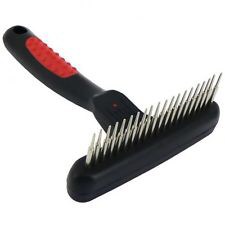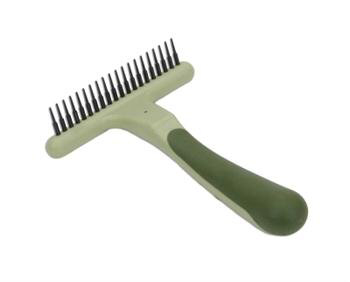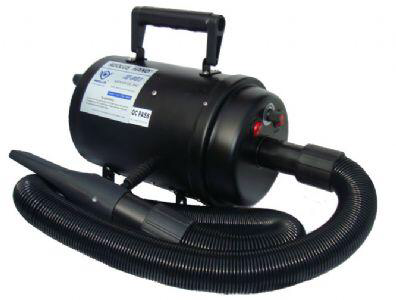How to Groom your Chow Chow
The Chow Chow's great lion like coat is one of the breed's most obvious traits and definitely what attracts most people to them. Chows are not meant to have lots of trimming and are meant to be left natural but this does require a few hours of brushing and/or bathing a week to keep them looking as they should.
Start them young
Grooming your Chow Chow should begin as soon as you bring your Puppy home .
You should get into a routine where your puppy is brushed daily. It is also important to point out that a puppy will probably need weekly bathes for the first month or so, especially when toilet training is underway, though this will depend a lot on the colour of your puppy)
The sooner you start your grooming with your puppy and getting them used to being brushed and blow dried the easier it will be for both you and your future groomer.
Chow Chows really do need brushing daily if possible, the density of their coats makes matting and 'hotspots' a regular problem if not groomed properly.
Make sure when brushing a chow that you ensure you brush from the skin and don't just skim over the top. To ensure this you should part the hair so that you can see the skin and brush down.
I always recommend that you start in the problem areas, such as armpits, the chest and around the ears (If you choose to use a harness too, any area around the harness is important to groom regularly). These areas matt up quicker and if left can cause problems.
Recommended tools
Bathing
Bathing your Chow is very important to keep the coat looking good. You can bath them as often as once a week and will not dry out the coat if you're using good products and doing the job properly. Most show Chows are bathed weekly, during the show season.
Before the bath, brush out any obvious knots or matts and coat that is blowing. Water actually tightens knots, and increases matting so its really important to get this done before you get them wet. Chow Chows have a very dense coat so it's very important that you wash all the way down to skin. I choose a good shampoo that lathers well and spend a good 10 minutes rubbing the shampoo into the coat and covers the body well. please ensure that you wash all the shampoo out whilst rinsing. I always do at least 3 full rinses to ensure all the product is out of the coat.
I wash my Chows though twice, the first time I use colour specific shampoos on my Chows, especially my creams (white shampoo) and my blacks (black shampoo), I then use a detangle high shine shampoo for the second wash.
Chows coats are meant to be corse, however if the dog isn't being shown or has a dry coat I recommend a good coat conditioner. I don't do this with every bath, but if you are finding that your dogs coat matts more than you expected, conditioner can help with that.
Drying
firstly towel dry my Chows faces and ears and then I blast the coat through on a medium power so not to produce more knots, try to blast your dog in the face as they really won't thank you for it and it may cause them to fight being blasted. Aim to get as much water out of your dogs coat with the blaster, as they can over heat quickly under the driers.
I then comb them through throughly.
Now you're ready to blow dry. Try to encourage your Chow Chow to lay down on its side on the table.(this is something I practise lots when grooming anyway). Drying and grooming is much easier with the Chow on its side and after awhile, they'll be so comfortable, they will probably fall asleep while you work!
with the dryer, Start with the belly hair and legs, working your way to the spine, blowing the coat while brushing down to the skin with the pin brush. Take care to dry the areas between his rear legs and around his private parts. Brushing to the skin is critical - you must be able to see the skin as you brush even on the most heavily-coated Chow! Otherwise, the hair closest to the skin will pack down, retain dirt and moisture and cause serious skin problems. If you brush the coat in small sections, reaching the skin is easier. Use the slicker and/or pin brush, following up with the comb to make sure all dead and shedding hair has been removed. Turn him over and repeat the process on the other side. Then he can stand or sit up so you can dry his ruff and bib.
Trimming
I trim any excess hair from my chows feet and keep their nails nice and short.
Special Summertime Tips
Many people feel sorry for their Chows in the summer and wonder if they should shave them. The Chow's thick coat is designed to protect him from heat as well as cold. The undercoat helps insulate the skin. Shaving your Chow may not help him feel cooler and in some cases, may contribute to skin problems as well as sunburn. Make sure all the dead hair is out regularly so the coat can act as it should and insulate the dog from both hot and cold weather.
Start them young
Grooming your Chow Chow should begin as soon as you bring your Puppy home .
You should get into a routine where your puppy is brushed daily. It is also important to point out that a puppy will probably need weekly bathes for the first month or so, especially when toilet training is underway, though this will depend a lot on the colour of your puppy)
The sooner you start your grooming with your puppy and getting them used to being brushed and blow dried the easier it will be for both you and your future groomer.
Chow Chows really do need brushing daily if possible, the density of their coats makes matting and 'hotspots' a regular problem if not groomed properly.
Make sure when brushing a chow that you ensure you brush from the skin and don't just skim over the top. To ensure this you should part the hair so that you can see the skin and brush down.
I always recommend that you start in the problem areas, such as armpits, the chest and around the ears (If you choose to use a harness too, any area around the harness is important to groom regularly). These areas matt up quicker and if left can cause problems.
Recommended tools
- a medium/coarse steel comb or poodle comb.
- a small fine-toothed comb with a handle
- Straight scissors
- thinning scissors
- a slicker brush
- a nail clippers
- A hair dryer
- A blaster
Bathing
Bathing your Chow is very important to keep the coat looking good. You can bath them as often as once a week and will not dry out the coat if you're using good products and doing the job properly. Most show Chows are bathed weekly, during the show season.
Before the bath, brush out any obvious knots or matts and coat that is blowing. Water actually tightens knots, and increases matting so its really important to get this done before you get them wet. Chow Chows have a very dense coat so it's very important that you wash all the way down to skin. I choose a good shampoo that lathers well and spend a good 10 minutes rubbing the shampoo into the coat and covers the body well. please ensure that you wash all the shampoo out whilst rinsing. I always do at least 3 full rinses to ensure all the product is out of the coat.
I wash my Chows though twice, the first time I use colour specific shampoos on my Chows, especially my creams (white shampoo) and my blacks (black shampoo), I then use a detangle high shine shampoo for the second wash.
Chows coats are meant to be corse, however if the dog isn't being shown or has a dry coat I recommend a good coat conditioner. I don't do this with every bath, but if you are finding that your dogs coat matts more than you expected, conditioner can help with that.
Drying
firstly towel dry my Chows faces and ears and then I blast the coat through on a medium power so not to produce more knots, try to blast your dog in the face as they really won't thank you for it and it may cause them to fight being blasted. Aim to get as much water out of your dogs coat with the blaster, as they can over heat quickly under the driers.
I then comb them through throughly.
Now you're ready to blow dry. Try to encourage your Chow Chow to lay down on its side on the table.(this is something I practise lots when grooming anyway). Drying and grooming is much easier with the Chow on its side and after awhile, they'll be so comfortable, they will probably fall asleep while you work!
with the dryer, Start with the belly hair and legs, working your way to the spine, blowing the coat while brushing down to the skin with the pin brush. Take care to dry the areas between his rear legs and around his private parts. Brushing to the skin is critical - you must be able to see the skin as you brush even on the most heavily-coated Chow! Otherwise, the hair closest to the skin will pack down, retain dirt and moisture and cause serious skin problems. If you brush the coat in small sections, reaching the skin is easier. Use the slicker and/or pin brush, following up with the comb to make sure all dead and shedding hair has been removed. Turn him over and repeat the process on the other side. Then he can stand or sit up so you can dry his ruff and bib.
Trimming
I trim any excess hair from my chows feet and keep their nails nice and short.
Special Summertime Tips
Many people feel sorry for their Chows in the summer and wonder if they should shave them. The Chow's thick coat is designed to protect him from heat as well as cold. The undercoat helps insulate the skin. Shaving your Chow may not help him feel cooler and in some cases, may contribute to skin problems as well as sunburn. Make sure all the dead hair is out regularly so the coat can act as it should and insulate the dog from both hot and cold weather.









